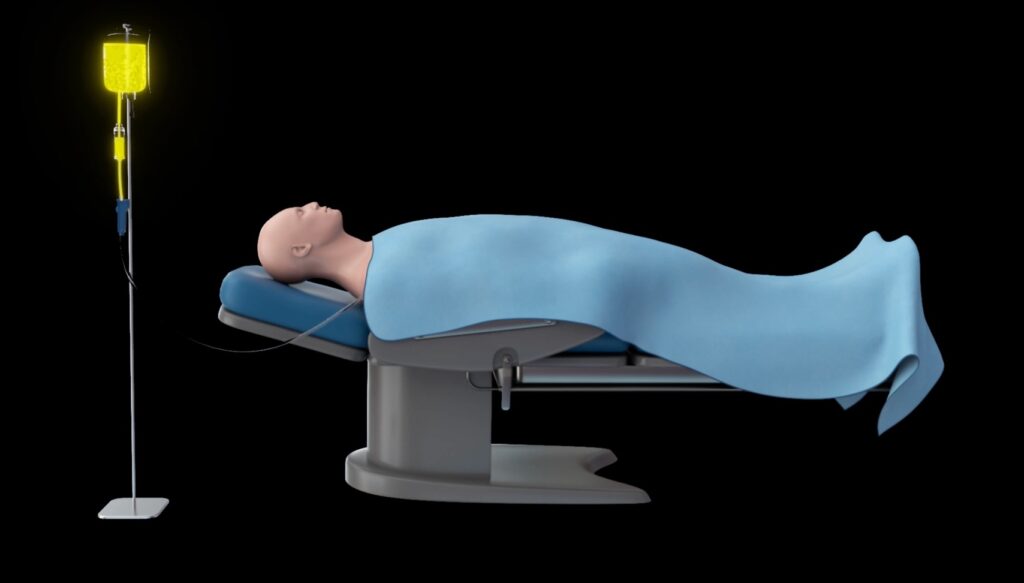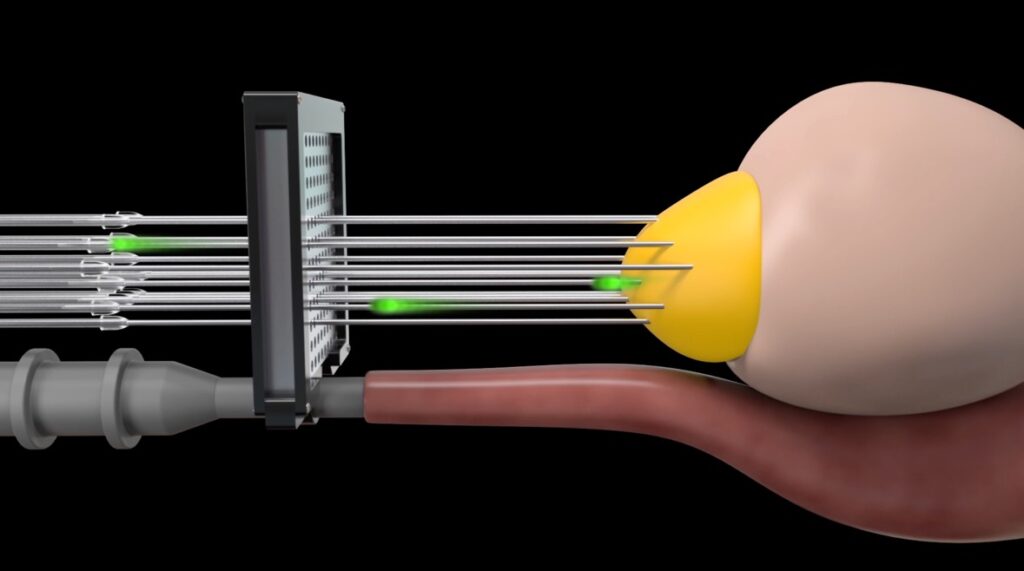Start / The product / Method
New application with PDT
The treatment method is based on photodynamic therapy (PDT), a proven method since the 80s for, for example, certain types of skin cancer. We have identified a way to use PDT to treat solid internal tumours. PDT means that the tissue is made light-sensitive with the help of a drug. When the substance is illuminated with light of a specific wavelength, the drug is activated and the reaction that occurs attacks the cancer cells.

The way that SpectraCure is doing prostate cancer treatment, using PDT, really allows to both tailor the procedure to the particular individual and also offer a very compelling focal treatment technique that allows it to treat prostate cancer regardless of where the tumour is within the prostate gland in a focal localised fashion and being able to do that with a minimal amount of side effects.
PhD Homer Pien, member of the SpectraCure board
Focal treatment of prostate cancer
The treatment system Q-PRO® has the potential to enable focal treatment of prostate cancer. Only the tumour in the prostate is treated, instead of the entire gland. Traditional treatment of prostate cancer targets the entire gland, which can lead to significant side effects such as impotence, urinary problems and rectal damage. Observational studies have shown that focal treatments are more cost-effective and give the patient fewer side effects, compared to radical prostatectomy (removal of the entire prostate) or external radiation therapy.
Step-by-step treatment process
1

The anesthetised patient is injected with a drug that makes the tissue sensitive to light.
2

Needles are inserted into the tumour with ultrasound guidance. IDOSE® calculates optimal placement. Optical fibers are passed through these needles.
3

The fibers deliver laser light and function as measuring probes. IDOSE® calculates the dose to be delivered to tailor the treatment to the patient.
4

The system then doses the light, whose wavelength is optimised to activate the drug and eliminate the tumour cells.

SpectraCure is developing the future systems for the treatment of internal solid cancer tumours. The goal of the proprietary and patented treatment system is to eliminate deep-seated cancer tumours and prolong the survival of cancer patients while maintaining their quality of life. When prostate cancer recurs, there are often no established treatment options other than lifelong hormone therapy, with its associated side effects.